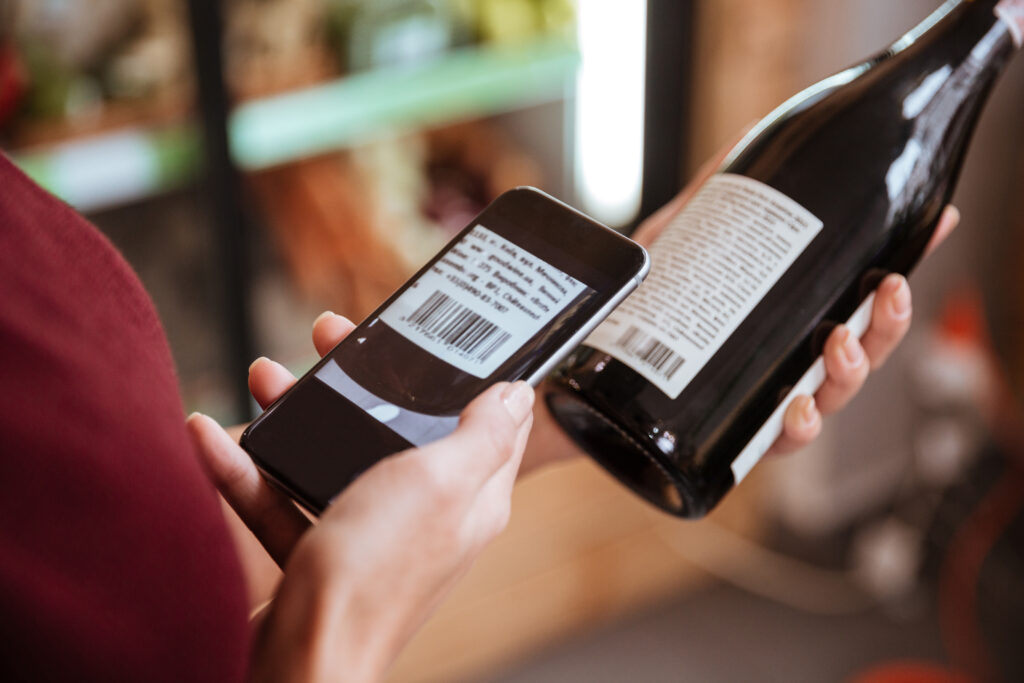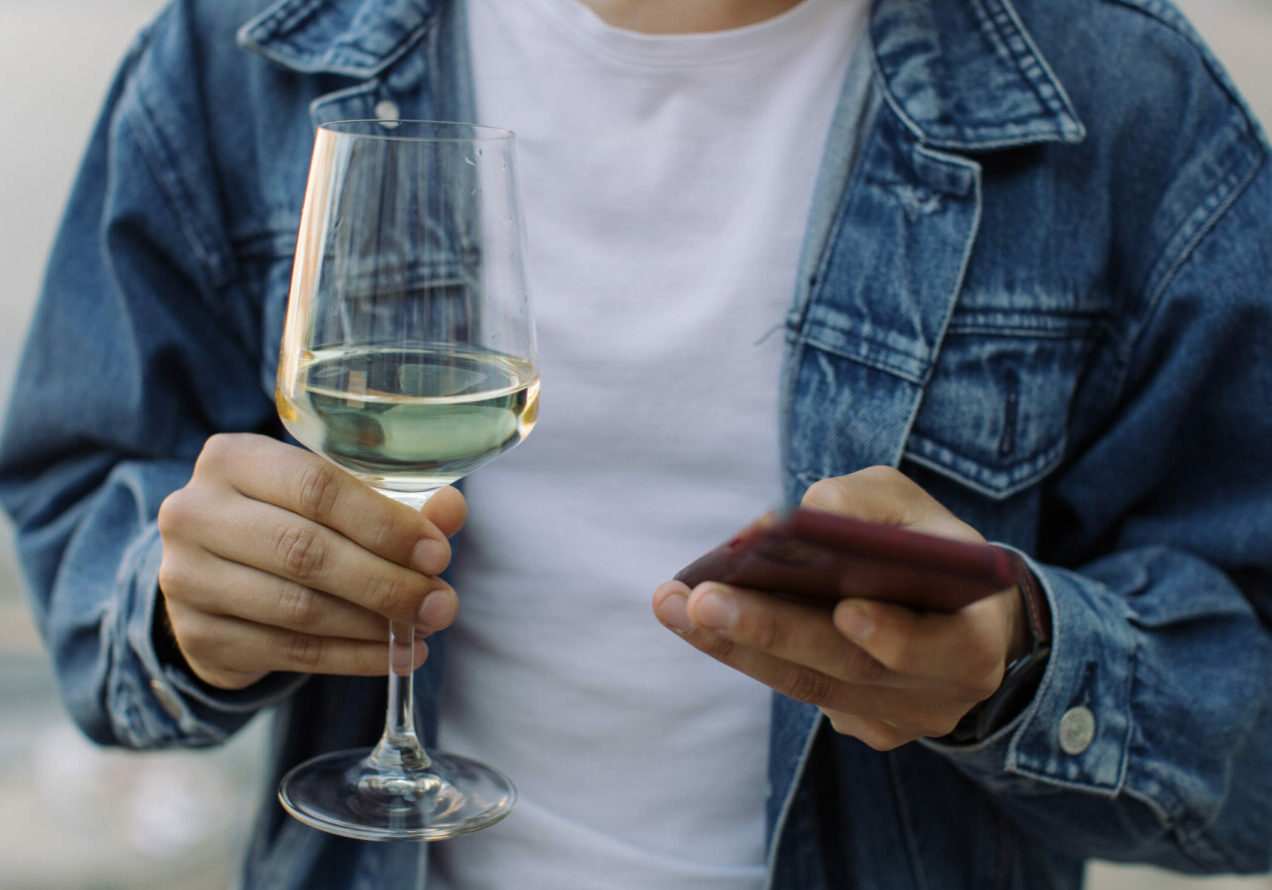Last Updated on December 19, 2023 by Troika Gellido
The wine industry is at the cusp of transformation, driven by consumers and digitalization.
This revolution is redefining the way wine is marketed, sold, and enjoyed. Digitalization in the wine industry is not just about adopting new tools and technologies, but also understanding and adapting to the changing landscape of consumer behavior.
In a Legends Behind The Craft episode, Jeff Gillis, creator of Winelikes– a revolutionary social media app for wine lovers, captured the essence of this shift with this goal: “We really want to get the wine novice involved… Just want to be a friend suggesting a great bottle of wine.” This is one of the reasons why Winelikes – an app that connects drinkers to experience and be educated about wine– was born.
There is a huge importance of digitalization in the wine industry, but up to what extent? This article explores its role in consumer preferences and how it’s reshaping marketing strategies.
Decoding The Modern Consumer’s Preferences
Understanding modern wine consumer preferences is crucial to thrive in today’s competitive market. The landscape of wine consumption has evolved significantly, influenced by a variety of factors.
Impact of Generational Changes
It’s no surprise that Millennials and Gen Z are leading the market. These younger generations tend to have different drinking habits compared to their predecessors. They often seek out unique, authentic experiences and show a preference for wines that tell a story or have a unique origin. This demographic is also more environmentally conscious, showing a preference for organic, biodynamic, or sustainably produced wines.

Now, these digital natives demand this digital era to make everything– including wine– be more accessible than ever. These consumers have access to a wealth of information online, from wine reviews and tasting notes to virtual vineyard tours. This easy access to information has led to educate more consumers who are often willing to explore and try new and lesser-known wine varieties and regions. Apart from generations, Gillis also notes the gap between wine beginners and enthusiasts, “There’s gotta be a better way to bridge the gap between the people who don’t really know about wine to those who love wine.”
Personalization and Experience
Wine consumers are also looking for more personalized experiences. This could mean personalized wine recommendations based on their taste preferences or customized wine club subscriptions. Digital tools and AI can play a significant role here, using consumer data to tailor suggestions and experiences. The ability to offer such personalization is becoming a key differentiator in the market.
Additionally, today’s consumers are often more interested in the experience surrounding wine than the wine itself. This includes wine tourism, tasting events, and wine-pairing dinners. They are looking for an immersive experience that connects them with the wine’s origin, production process, and story.
As for Gillis and team, they have known this for quite a while already and made Winelikes rooted towards personalization and experience: “We have over 65 varietals… It’s not just an AI or an algorithm showing you… We want to show you that there’s so many varietals and if you don’t like one wine, you might like something different.” They are reshaping how wine consumers are choosing their wines.
The Role of Social Media in Health and Wellness Trends
Social media has also changed the way consumers discover and purchase wine. Social media platforms are not just for connecting with friends; they’re also channels for discovering new wines and learning about different wine cultures. Influencers and peer recommendations on these platforms can significantly sway consumer choices.
Social media doesn’t only affect consumers but also the movers in the wine industry– winery owners and experts are starting to make projects inspired by digital apps and their concepts. Like Gillis who describes the inspiration behind Winelines: “We thought of a dating app, like, ‘Hey, you like Merlot. I like Merlot. Let’s meet up at a restaurant.’ So, why wouldn’t you go [to your family and friends] for wine?“, it’s clear that the concept and benefits of these platforms are influential in shaping consumer preferences.
It’s also clear how social media drives trends. This is why it’s no surprise how health and wellness trends on socia media have influenced wine consumption habits. Among the digitally savvy consumers of today, there is a growing demand for low-alcohol wines, alcohol-free wines, and wines with fewer additives or sulfites. Consumers are increasingly mindful of the health implications of their consumption choices and are looking for options that align with their health and wellness goals.
Digitalization in the Wine Industry: Digital Marketing Tools Guiding the Wine Curious
Beyond marketing, digital platforms are pivotal educational tools. They play a crucial role in bridging the gap between wine experts and enthusiasts.
1. Interactive Wine Apps and Websites
Wine apps and websites have become a cornerstone of wine education. They provide a wealth of information ranging from basic wine varieties and tasting notes to in-depth reviews and vineyard histories. Apps like Vivino and Delectable allow users to scan wine labels for instant information, while others like Winelikes integrate social aspects, making learning about wine more engaging and accessible. As Jeff Gillis of Winelikes states, “Instead of reading off these reviews on some wine apps, like I don’t know who this person is behind the wall… I want to see someone I trust.” These platforms are ideal for beginners who are starting to explore the wine world, offering a guided, informative experience.

2. Virtual Tastings and Online Wine Courses
The pandemic accelerated the adoption of virtual tastings and online wine courses. These digital experiences offer consumers the opportunity to learn about wine from the comfort of their homes. Wineries and wine educators host live sessions where participants can taste along, ask questions, and learn about wine making processes, wine regions, and tasting techniques. These sessions often cater to a range of knowledge levels, from beginner to advanced, making wine education more inclusive.
3. Social Media as an Educational Tool
We’ve known how social media platforms have become effective educational tools in the wine industry. Wineries, sommeliers, and wine influencers use platforms like Instagram, YouTube, and TikTok to share wine knowledge through engaging content. From short videos explaining wine terms to posts about food and wine pairings, these platforms are making wine education more approachable and less intimidating. The visual nature of these platforms, especially Instagram, aligns well with wine’s sensory appeal, making learning about wine both informative and aesthetically pleasing.
4. Blogs and Online Articles
Wine blogs and online articles remain vital resources for wine education. They offer detailed insights on a wide range of topics, from beginner guides to expert analyses of wine trends. Many wine magazines and experts have a strong online presence, providing up-to-date content that keeps enthusiasts informed about the latest in the wine world. These written resources complement the more interactive tools, offering depth and detail that are invaluable for those looking to deepen their wine knowledge.
5. E-commerce Integration for Learning and Purchase
Many digital wine platforms integrate e-commerce, allowing consumers to learn about and purchase wine simultaneously. This integration provides a seamless experience, where learning about a wine directly translates into the ability to purchase it. It’s an effective marketing strategy, as consumers are more likely to buy wines they understand and feel connected to.

6. Customized Learning Experiences with AI
We have seen how Artificial intelligence (AI) played a significant role across many industries this year. This coming year, AI will continue to provide access to more personalized wine education. AI can be used to analyze consumer preferences and behavior to offer customized wine recommendations and educational content. This personalization enhances the learning experience, making it more relevant and engaging for each user.
The shift in consumer wine purchasing vividly reflects the broader digital transformation sweeping across industries. As customers gravitate towards online platforms for education, exploration, and purchase, the wine industry must embrace digitalization not just as a tool, but as an integral part of its evolution.
